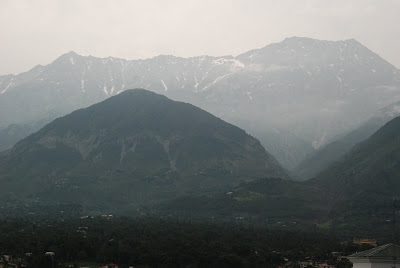 |
| The Majestic Scenery of Sidhbari and the Himalayas |
Rusheel Nayak
It was difficult to leave the CORD center today because we made so many friends over the last two weeks. I felt the trip sped by too quickly, but also felt we accomplished what we set out to do: make an impact with the local villagers. I got to experience all the different aspects of CORD’s outreach into the villages and how it is slowly making a difference in everyone’s lives. Also, by interacting at the grassroots level with the local Mahila Mandals, the Yuvti Samuhs, and Balavihar children, we brought perspective into the lives of all the villagers by discussing the importance of self-confidence, hygiene, sanitation, and voicing one’s opinion in front of the government. Although it is difficult to see the impact we made on others, I can easily assess the effect this trip has had on me. I realize the importance of CORD’s work in the rural villages of India and my duty of increasing awareness about CORD in America. Both my trip to CORD Thamaraipakkam in 2009 and my trip to CORD Sidhbari in 2011 have given me important perspective about the world and the importance of increasing awareness in America about the wonderful work CORD does every day.
By the way, the Dalai Lama was on our flight from Daramshala to Delhi! Pretty awesome!!
Sonali Nayak
My experiences at CORD are priceless because I was able to contribute to India. It was great because I got to see all the different aspects of CORD. My favorite was working with the CBR department and helping disabled kids to get better. Interaction with these kids really gave me a new perspective, and seeing how hard they worked was very inspirational. CORD gave me an incredible opportunity, and it was hard to leave all the friends I had made. I hope to return to Sidhbari in the next few years after I learn Hindi so I can contribute further to the goal of rural development.
Sonali Nayak
My experiences at CORD are priceless because I was able to contribute to India. It was great because I got to see all the different aspects of CORD. My favorite was working with the CBR department and helping disabled kids to get better. Interaction with these kids really gave me a new perspective, and seeing how hard they worked was very inspirational. CORD gave me an incredible opportunity, and it was hard to leave all the friends I had made. I hope to return to Sidhbari in the next few years after I learn Hindi so I can contribute further to the goal of rural development.
 |
| Final Photo before Catching our Flight |









